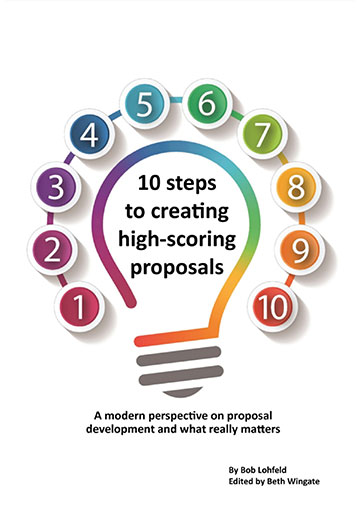How to Survive and Thrive Under FAR Part 29 Changes

By Bruce Feldman and Jacob Bertram
Amid the major, ongoing initiative to modernize and revise the Federal Acquisition Regulation (FAR), this article by Bruce Feldman and Jacob Bertram focuses on changes to FAR Part 29 – Taxes. It identifies the opportunities and risks that industry growth teams face because of recent acquisition policy changes, and what BD, capture, and proposal professionals should do to adapt. FAR Part 29 – Taxes is often overlooked in traditional proposal playbooks—but its revision should catch the attention of every BD, capture, and pricing professional. For more information on how to address FAR changes, contact Lohfeld Consulting.
Introduction to FAR 2.0
On May 2, 2025, the Office of Management and Budget (OMB) released a memo, “Overhauling the Federal Acquisition Regulation”[1], now known informally as FAR 2.0 or Revolutionary FAR Overhaul (RFO), with the intent of reducing red tape and empowering agencies to increase focus on buying mission-aligned solutions. These changes are being implemented initially as FAR class deviation guidance, with formal rulemaking planned for late FY25 and beyond.
FAR 2.0 changes the paradigm of the FAR being a comprehensive, regulatory framework by removing non-statutory content that can be deleted or moved to non-binding federal “buyer guides” or agency acquisition playbooks. The FAR 2.0 approach decentralizes acquisition authority, enables mission-first frameworks, and streamlines content.
Why FAR Part 29 Matters
FAR Part 29[2] was part of the original FAR release in 1984 and has been modified several times over the past 40+ years to maintain consistency with changes in tax policy and procedure. The intent of FAR Part 29 is to ensure that the federal government procurement officials and contracting officers (COs) have clear instructions on taxes as they apply to contracts. To be more specific, the government wants to ensure that contracts comply with applicable tax laws, and, just as importantly, protect the government’s interests by avoiding unnecessary tax payments.
FAR Part 29 has historically guided COs on how taxes should be handled in federal contracts. It outlines which taxes can be included in pricing, how tax obligations should be disclosed, and how exemptions must be applied. Notably, it has always been a source of friction during proposal review and price negotiations—especially when tax assumptions are unclear or inconsistent. FAR Part 29 also provides industry with a window into the application of taxes to contracts so that companies can plan for payment and flag discrepancies.
Under FAR 2.0, these elements are being revised for clarity, with a renewed push for accountability, legal consultation, and exemption optimization, as summarized in Table 1. These updates are effective immediately, via class deviation, and will undergo formal rulemaking in FY26.
Table 1. Impact of Specific FAR Part 29 Changes
| Previous FAR Version Section and Change Title | Summary of the Change | Impact on Government Procurement Officials & Contracting Officers |
| § 29.001 Deletes definitions of NATO/U.S. Forces | Removes definitions for “North Atlantic Treaty Organization (NATO) Forces” and “U.S. Forces.” | Eliminates legacy content irrelevant to current procurement landscapes. |
| § 29.101 Consolidates Legal Consultation Requirements | Legal consultation now mandatory. | Directs that COs must consult legal counsel before negotiating with taxing authorities. |
| §§ 29.201, 29.302 Reinforces Mandate to Take Maximum Advantage of Exemptions | Stronger language on taking full advantage of tax exemptions. | Increases emphasis on CO responsibility to avoid unnecessary tax burden. |
| § 29.305 Clarifies State and Local Tax Exemption Procedures | Clarifies exemption process for state/local taxes. | Standardizes use of “reasonable basis” to support exemption claims. |
| § 29.402-4 Deletes Afghanistan/NATO-SOFA Clauses | Deletes Afghanistan/NATO clauses. | Removes obsolete prescriptions tied to missions no longer active. |
Conclusions
The FAR 2.0 revisions to FAR Part 29 largely support clarity, streamlining, and accountability. For BD, capture, and proposal pricing teams, it is essential to pay attention to these for compliance and pricing integrity. Key takeaways:
1. Flag Tax Treatment as a Key Pricing Risk
Proposal pricing and contract administration professionals cannot treat taxes as a boilerplate assumption in cost volumes. Identify them clearly in pricing models and narrative files. The FAR now explicitly requires proposals to show applicable tax rates and support exemption assumptions—something many proposals skip.
The FAR revisions put more pressure on COs to ensure that only allowable taxes are paid, so expect COs to push back or request clarification on how taxes were handled. Your team should be proactive in preempting those questions with solid rationale and straightforward math.
3. Strengthen Collaboration Between BD, Pricing, and Contracts
Your pricing, contracts, and BD teams must not operate in silos when it comes to tax analysis. BD and capture leads need to understand how tax exemptions and local jurisdictional issues impact evaluation.
4. Anticipate Post-Award Adjustments
Post-award tax changes can affect final pricing, so your price volume and subcontractor agreements should include language to protect profit against unforeseen tax adjustments.
5. Know Your CO’s Risk Tolerance
If you’re dealing with a CO who’s new, cautious, or in a compliance-heavy agency, expect a strict interpretation of FAR Part 29 and build that into your schedule and negotiation strategy. On the other hand, COs familiar with the new language may welcome clarity—use that to your advantage.
The FAR Part 29 changes create an opportunity for industry teams to show COs that they understand the government’s obligations when it comes to taxes. Help yourself win with clarity, compliance, and professionalism in proposal tax analysis.
Contact Lohfeld Consulting today to ensure your proposals and contract management processes remain audit-ready and fully aligned with the latest regulatory updates.
Relevant Information:
Bruce Feldman, Vice President, Lohfeld Consulting Group. Bruce brings more than 30 years of experience as a subject matter expert (SME) in business development, capture management, and proposal development specializing in Space and National Intelligence programs for the U.S. Air Force (USAF), U.S. Space Force (USSF), Intelligence Community (IC), Office of the Secretary of Defense (OSD), Department of Defense (DOD) 4th Estate, and Combatant Commands. He leads Lohfeld Consulting Group’s Artificial Intelligence (AI) initiatives and is the lead trainer for our Generative AI for Proposal Professionals classes, a trainer for our Capture Management and Strength-Based Winning® classes, as well as a consulting advisor.
Jacob Bertram is a senior leader in the federal procurement industry with over 20 years of experience spanning GSA, the Department of Energy, DCMA, and DCAA. He currently advises Fortune 500 companies, government agencies, and federal contractors on acquisition strategy, pricing, audit readiness, and operational efficiency. Jacob is DAWIA Level III certified in Contracting and a member of the Defense Acquisition Corps.
Lohfeld Consulting Group has proven results specializing in helping companies create winning captures and proposals. As the premier capture and proposal services consulting firm focused exclusively on government markets, we provide expert assistance to government contractors in Capture Planning and Strategy, Proposal Management and Writing, Capture and Proposal Process and Infrastructure, and Training. In the last 3 years, we’ve supported over 550 proposals winning more than $170B for our clients—including the Top 10 government contractors. Lohfeld Consulting Group is your “go-to” capture and proposal source! Start winning by contacting us at www.lohfeldconsulting.com and join us on LinkedIn, Facebook, and YouTube(TM).
Sources:
[1] https://www.whitehouse.gov/wp-content/uploads/2025/02/M-25-26-Overhauling-the-Federal-Acquisition-Regulation-002.pdf
Paperback or Kindle
10 steps to creating high-scoring proposals
by Bob Lohfeld
contributors Edited by Beth Wingate
Subscribe to our free ebrief
Teaming friends, frenemies, and enemies—12 tips to mitigate harmful effects
Did you know that contracting officers spend up to 20% of their time mitigating disputes between teaming partners? In an informal poll we conducted on LinkedIn last month, 40% of respondents classified their teaming partners as “frenemies” on their last bid.
Explore Further
- Advice (539)
- AI (28)
- APMP (18)
- Army MAPS Contracts (3)
- Business Development (294)
- Capture Management (266)
- Complex Technology Grants Services (26)
- Favorite Books (5)
- GenAI (4)
- Go-to-Market (27)
- Graphics (5)
- Lohfeld Books (2)
- NASA SEWP VI Contracts (2)
- Navy SeaPort-NxG Contracts (2)
- NIST MSE Grants (1)
- NIST NAPMP Grants (2)
- Past Performance (63)
- Post-submission Phase (14)
- Pre-RFP Preparation (264)
- Proposal Management (339)
- Proposal Production (75)
- Proposal Reviews (38)
- Proposal Writing (107)
- Pursuit Phase (108)
- Research Report (4)
- Resources (63)
- Tools & Tips (421)
- Training (13)
- Uncategorized (223)

Sign Up for INSIGHTS and Download your FREE book
We'd love to help you with your proposals. Enjoy our complimentary Lohfeld Consulting Group Capture & Proposal Insights & Tips book with your FREE subscription to our Insights Newsletter.
GET YOUR FREE BOOK



